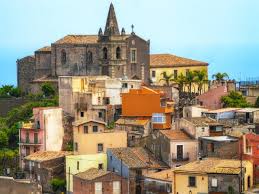World’s longest sea crossing: Hong Kong-Zhuhai bridge opens spans 55km (34 miles)

Chinese President Xi Jinping has officially opened the world’s longest sea crossing bridge, nine years after construction first began.
Including its access roads, the bridge spans 55km (34 miles) and connects Hong Kong to Macau and the mainland Chinese city of Zhuhai.The bridge has cost about $20bn (£15.3bn) and seen several delays.China has been working on the bridge since 2009
Construction has been dogged by safety issues – at least 18 workers have died on the project, officials say.
The bridge will open to regular traffic on Wednesday.
The bridge, designed to withstand earthquakes and typhoons, was built using 400,000 tonnes of steel, enough to build 60 Eiffel Towers. About 30km of its total length crosses the sea of the Pearl River delta. To allow ships through, a 6.7km section in the middle dips into an undersea tunnel that runs between two artificial islands.
In the past, travelling between Zhuhai and Hong Kong would take up to four hours – the new bridge cuts this down to 30 minutes.
Can anyone drive across the bridge?
No. Those who want to cross the bridge must obtain special permits, allocated by a quota system. And all vehicles will pay a toll.
The bridge is not served by public transport, so private shuttle buses will also ply the route. There is no rail link.
Authorities initially estimated that 9,200 vehicles would cross the bridge every day. They later lowered their estimations after new transport networks were built in the region.
Environmental groups say the project may have caused serious harm to marine life in the area, including the critically rare Chinese white dolphin.It is rare to see Chinese White Dolphins around the bridge after years of construction, say environmental groups
The number of dolphins seen in Hong Kong waters has decreased from 148 to 47 in the past 10 years, and they are now absent from the waters near the bridge, according to the Hong Kong branch of the World Wide Fund for Nature (WWF).
“The project has made irreversible damage to the sea,” said Samantha Lee, Assistant Director of Ocean Conservation at the WWF. “I am worried
Is it going to make up its costs?
The bridge, surrounding link roads and artificial islands cost a staggering $20bn to build – the main bridge alone cost $6.92bn.
Chinese officials say it will generate up to 10 trillion yuan ($1.44tn; £1tn) for the economy, but one Hong Kong lawmaker cast doubt on that figure.
“I am not so sure either how the bridge can sustain itself if not many cars are using it,” Tanya Chan told , the bridge will only earn around $86m in tolls per year.In fact, the bridge’s maintenance costs would already take away a third of this income.
The bridge main purpose is symbolic, ensuring Hong Kong is physically connected to the mainland.





